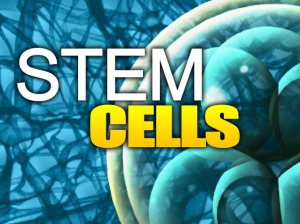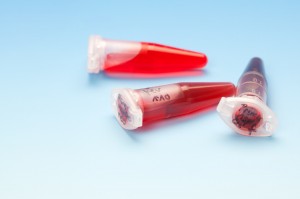Optimize Medical Group offers various stem cell treatments. These therapies are performed as an outpatient by an experienced Board Certified physician, and maintain minimal risks. Click on the Treatments on the Left Tabs for more information.
S
 Traditional therapies for ligament injury, tendonitis and degenerative arthritis all have one thing in common. They help put a “band-aid” on the pain well, but they do not alter the course of the condition. They do not REPAIR or REGENERATE the problem!
Traditional therapies for ligament injury, tendonitis and degenerative arthritis all have one thing in common. They help put a “band-aid” on the pain well, but they do not alter the course of the condition. They do not REPAIR or REGENERATE the problem!
Regenerative Medicine with stem cell therapy is becoming the new cutting edge reality. The therapies offer the possibility to repair a damaging condition, while offering pain relief simultaneously.
Here is an example. When an athlete has a ligament injury to the knee, it may take six to nine weeks to heal. At that point, the person may start playing sports again.
There are two issues with this conventional scenario that stem cell therapy can fix. Number one is the time frame. Stem cell procedures may cut the time in half necessary to heal the injury.
The second issue is that ligament injuries by themselves do not heal back to one hundred percent. The same goes for tendon injury. With stem cell therapy, ligament or tendon tissue may in fact heal back to normal.
Regenerative therapies may allow patients to avoid or delay the need for surgery when it comes to Achilles tears, rotator cuff tendonitis, degenerative arthritis and more.
With such a low risk, outpatient stem cell therapies offer a tremendous upside. Make your appointment at Optimize Medical Group today!
A
Twelve Reasons Why Amniotic Fluid is Beneficial in Regenerative Medicine
Pain management has come a long way in the 21st Century, with several revolutionary procedures now available to help provide relief. This includes radiofrequency ablation, spinal cord stimulation, intrathecal pain pumps, Botox injections for migraines and all kinds of nerve blocks.
Do you know what all of these treatments have in common? They are all very effective at providing pain relief, but none of them actually fix ANYTHING. They are not designed to repair or regenerative tissue such as cartilage, tendon or ligament. So they all act as a proverbial “band-aid.”
Amniotic fluid is gaining incredible popularity in regenerative medicine. If you have never heard of amniotic fluid being used for treatment in adults, you are not alone. Although it has been used for decades in hundreds of thousands of individuals for indications such as wound healing, most people in the US are just finding out the potential amniotic fluid contains for clinical use.
Here are the Top 12 Reasons why Amniotic Fluid is beneficial in Regenerative Medicine.
Embryonic stem cells have presented issues in the past because they often do not know when to stop replicating. Obviously that could be a problem as tumors could develop. Amniotic fluid stem cells do not have that problem. While they are not pluripotent (convert into ANY cell type), they can convert into most cell types in humans. The intermediate quality makes them beneficial yet safe from over-replication.
Amniotic fluid contains hyaluronic acid as merely one component amongst many. This makes it effective for joint pain relief with the hyaluronic acid, along with its other qualities.
Call the practice today for an appointment today!
B

One of the top procedures in the world of stem cell therapy for pain management conditions involves bone marrow derived stem cells.
The stem cells are harvested from the patient in a procedure that is outpatient and very low risk. Indications for the procedure include degenerative arthritis of the hip, knee, shoulder, angle and other joints, ligament injury, fracture healing, tendinitis and small tendon tears.
Those interested in the procedure range from older individuals trying to avoid a joint replacement, to anyone with a cartilage defect and joint pain, to athletes who are trying to avoid surgery and get back on the field faster. Additionally, those with tendon tears in the shoulder or achilles, or chronic tendinitis can benefit as well.
Plenty of times, patients have tried all sorts of conservative treatment and are essentially facing surgery with stem cell therapy as a last resort. Typically, it is extremely beneficial.
Adult bone marrow contains stem cells and growth factors that are essential for tissue repair. By harvesting the bone marrow directly, doctors can then immediately process the fluid and injected into the problem region. The stem cells that are acquired are obviously adult stem cells and not fetal.
Slight clarification will help regarding the type of stem cells that come from adult bone marrow. When fetal tissue is used to acquire stem cells, they are called pluripotent. These are embryonic stem cells and can turn into any type of tissue in the human body. This can present a problem for two reasons. One is, the largest ethical concern with previous stem cell therapy was the use of fetal tissue. The second issue was the use of embryonic stem cell’s that could possibly form tumors because they didn’t know when to stop replicating.
Thankfully, bone marrow derived stem cell therapy avoid both of these issues. As mentioned, only adult and not fetal tissue is used. Also, the stem cells are adult mesenchymal stem cells and not embryonic. This means they are multipotent and not pluripotent. They can still convert into numerous types of tissue in the body, but not any type. They can still turn into cartilage, muscle, bone, tendon or ligament.
The bone marrow derived stem cell procedure is completely outpatient. Once the fluid is harvested from the hip region iliac crest, it is immediately processed to concentrate the stem cells and growth factors. Injection occurs into the problem area under sterile conditions during the same setting.
Initial studies have been showing excellent outcomes for those suffering from degenerative arthritis, degenerative disc disease, cartilage defects,and soft tissue injuries such as tendinitis, tendonosis and ligament injury.
Optimize Medical Group offers both bone marrow derived stem cell procedure’s along with amniotic derived therapy as well.
P
You have likely heard of PRP therapy in the media, given the propensity for athletic stars to use it in an effort to heal from injuries faster.
What is PRP Therapy?
Your blood is mainly a liquid but it does have small solid components including platelets, white cells, and red cells. The platelets in your blood are important in blood clotting. But they also contain proteins which are important for healing any injury.
PRP is plasma that has more platelets then your blood normally has. This higher concentration of platelets is typically 5 to 10 times greater than your natural blood. This means that you get a higher concentration of the proteins which can heal your injuries. In order to develop a preparation of this you have to have your blood drawn. Then the platelets will be separated from your red and white blood cells. Their concentration will be increased in a centrifuge and the increased concentration of platelets will become bind again with your remaining blood.
How does PRP actually work?
There are no conclusive studies which indicate how it works but some laboratory studies show that it does speed up the healing process in your body. In order to increase the healing from an injury the injury site has to be treated with a preparation. You can do this in one of two areas. The first is that the solution can be injected directly into your injured area. For example, people who play tennis and have a swollen heel cord can have a local anesthetic and mixture of PRP injected directly into the tissue which is inflamed.
Following this injection the pain and increase at first but after several weeks will decrease significantly and be back to normal. PRP can also be used after surgery to help repair the healing process. For example, athletes who have a torn ligament and require surgery to repair it can improve the recovery time by treating the injured area with a PRP solution during surgery. This is done by mixing the PRP into the torn tissue as it is stitched together.
Is PRP effective?
Research studies are currently evaluating the effectiveness of this treatment. For now the studies remain inconclusive. There are factors which can influence the effectiveness including your overall health, the area of the body which is receiving treatment, and whether your injury is chronic or acute.
Typically this PRP solution is used to treat chronic tendon injuries such as tennis elbow. It can also be used to treat jumper’s knee or Achilles tendinitis. It has been used to treat acute sports injuries including muscle injuries and acute ligament injuries. Professional athletes who suffer from pulled hamstrings or knee sprains have turned to PRP therapy to improve their healing process. It has also been used in a limited fashion to heal broken bones and to treat arthritis in the knee. No conclusive evidence can back up the claims in the media about its effectiveness to date.
Platelet-rich plasma therapy at Optimize Medical Group is provided by compassionate, expert, Board Certified physicians at the practice. They have extensive experience with regenerative medicine including PRP therapy, make your appointment today!